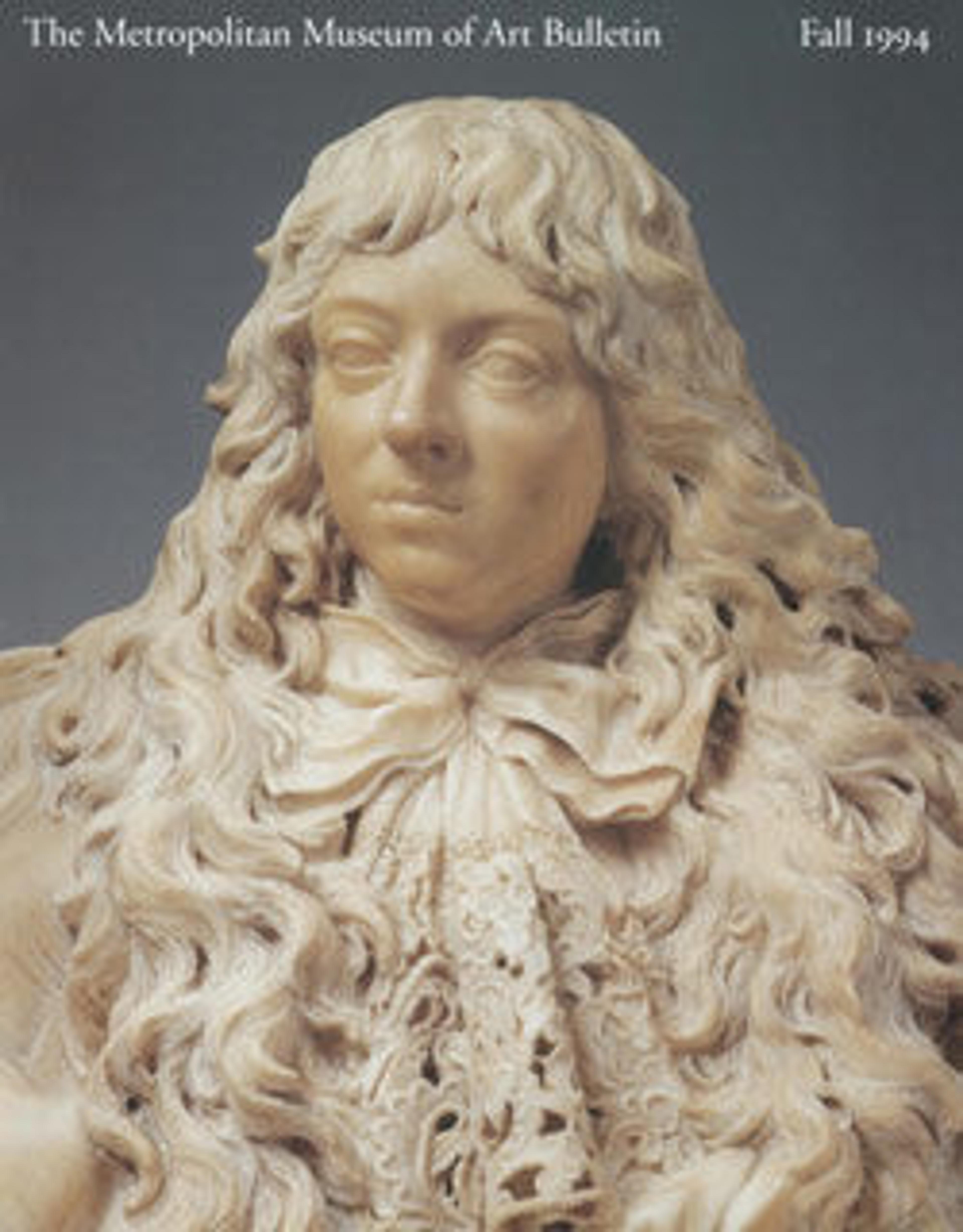Portrait of a young woman
Triqueti was one of the most sophisticated sculptors of his dat. He knew the Elgin marbles, collected Géricault, and catalogued Bonington. His early grounding in ornamental sculpture is still manifest in this work from the middle of his career, as is his talent for portraiture-comparisons with the swannecked beauties of Ingres come readily to mind. Triqueti received several coveted commissions: the bronze doors of the Madeleine in Paris, completed in 1837; the marble effigy of the widely lamented duc d'Orleans at Neuilly, completed in 1843; and the marble cenotaph of Prince Albert in the Wolsey Chapel at Windsor, begun in 1864. The subject of the relief may be his wife, an Englishwoman whom he wed in 1847. He reinvented this type of portrait medallion, the imago clipeata, from Greco-Roman antiquity while giving it his own abstract interplay of concaves and convexes. The type enjoyed a healthy afterlife in the portraiture of the British sculptor Alexander Munro. The signature and date of 1805 under the shoulder are in a later hand.
Artwork Details
- Title: Portrait of a young woman
- Artist: Henri-Baron de Triqueti (French, 1803–1874)
- Date: 1850
- Culture: French
- Medium: Marble
- Dimensions: 22 7/8 x 17 x 8 in. (58.1 x 43.2 x 20.3 cm)
- Classification: Sculpture
- Credit Line: Purchase, Lila Acheson Wallace Gift, 1994
- Object Number: 1994.42
- Curatorial Department: European Sculpture and Decorative Arts
More Artwork
Research Resources
The Met provides unparalleled resources for research and welcomes an international community of students and scholars. The Met's Open Access API is where creators and researchers can connect to the The Met collection. Open Access data and public domain images are available for unrestricted commercial and noncommercial use without permission or fee.
To request images under copyright and other restrictions, please use this Image Request form.
Feedback
We continue to research and examine historical and cultural context for objects in The Met collection. If you have comments or questions about this object record, please contact us using the form below. The Museum looks forward to receiving your comments.
